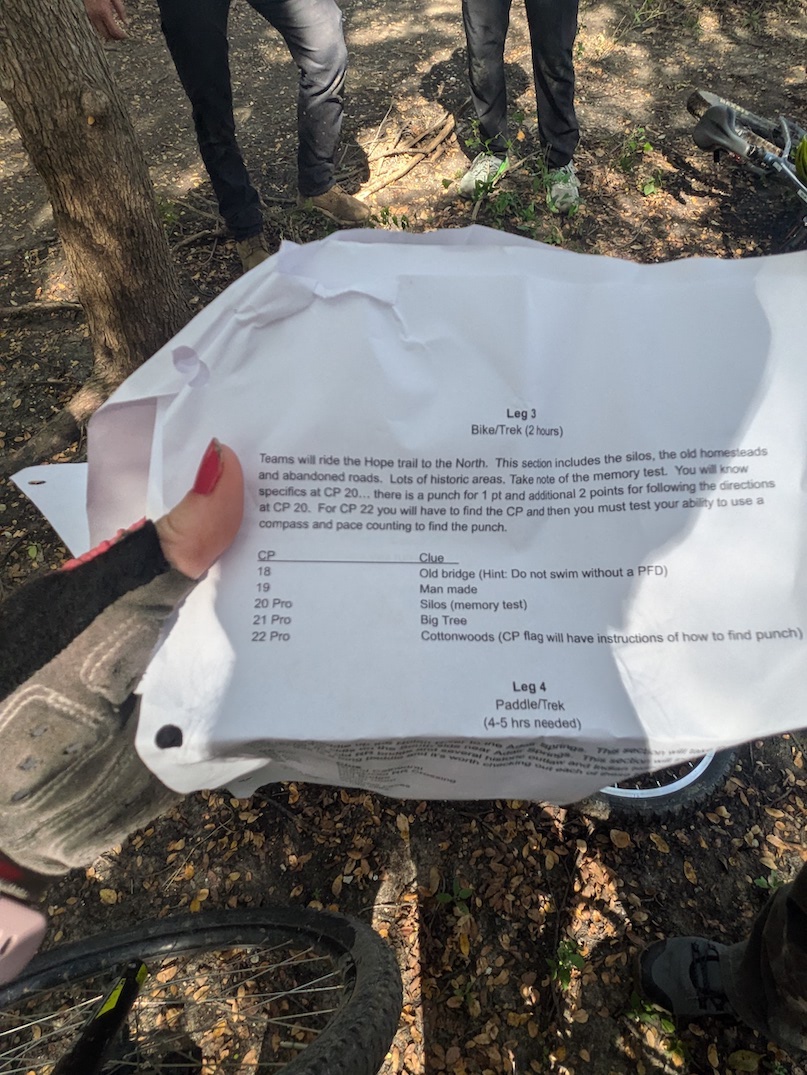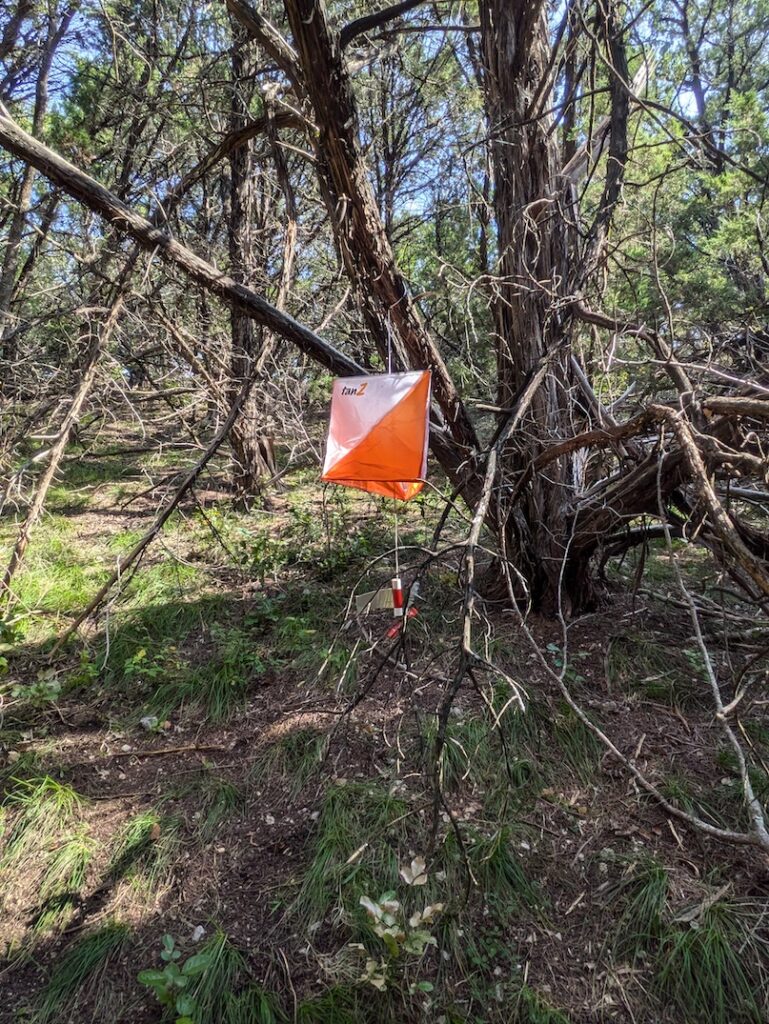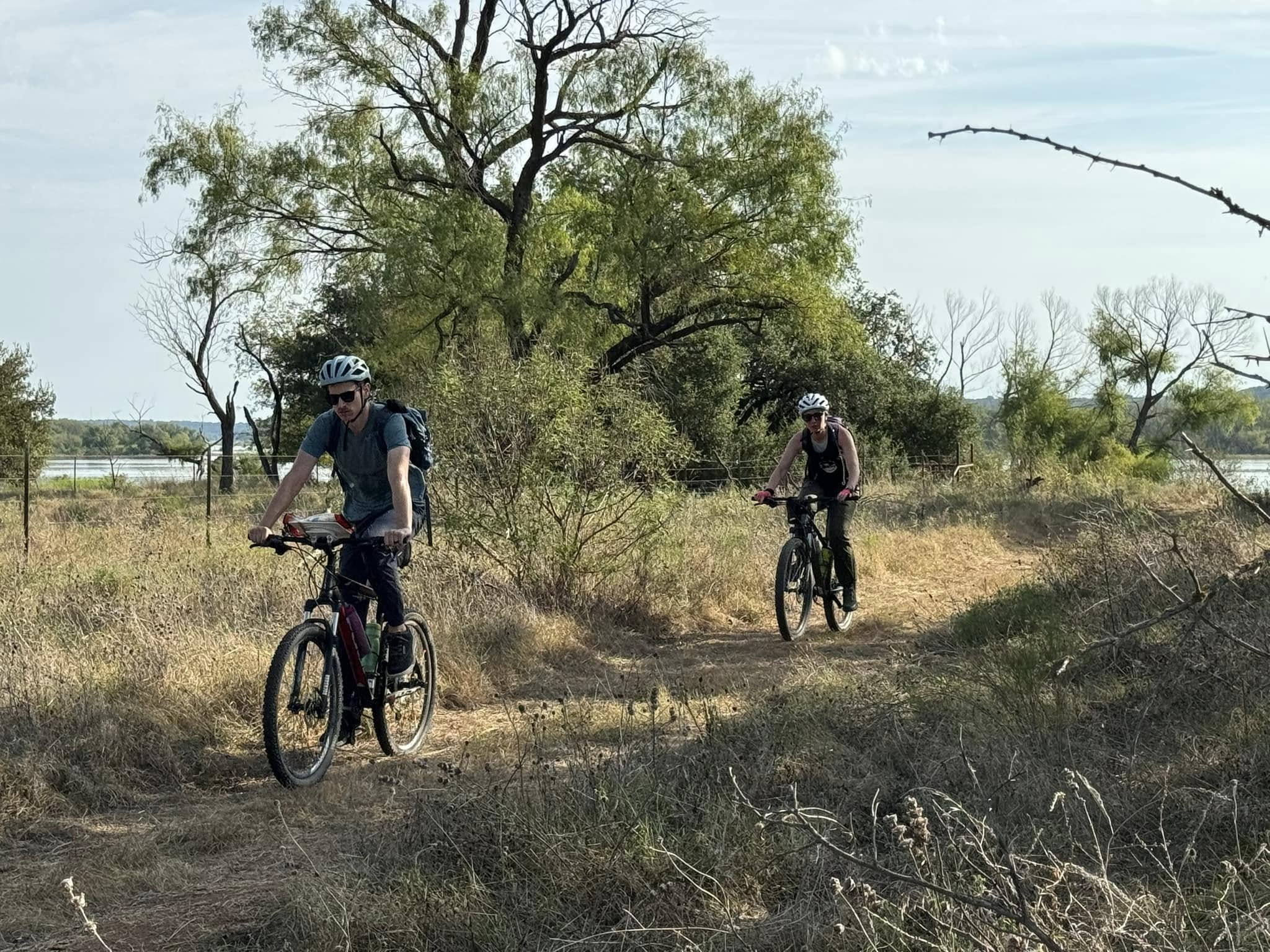Ask any adventure racer and they’ll tell you: no two races are the same. New challenges, weird surprises, and things you swore you wouldn’t forget but absolutely did — it’s all part of the fun.
The 2024 Chisholm Trail Adventure Race delivered on all fronts. I’m reminded of Dwight Schrute’s quote from The Office “Don’t be an idiot. Before I do anything, I ask myself ‘Would an idiot do that?’ and if the answer is yes, I do not do that thing.” If only it was that easy.
1. Prepare for the weather
We knew North Texas in mid-September would be hot. What we didn’t expect was a full-on furnace: high 90s with a triple-digit heat index.
Unfortunately, we had no training in the heat and desperately needed it. Typically, we’ll start our morning runs or rides before sunrise, wrapping up well before the heat of the day. We weren’t ready for sustained effort in the harsh sun – often with little shade.
We prepped plenty of water, electrolytes, and snacks, which helped — but didn’t make up for poor heat acclimation. We also didn’t manage our effort early enough or cool down when we had the chance (hello, creeks). Next time? We’ll train in the heat and treat creeks like rest stops, not scenic backdrops.
2. Set up for the race in daylight
We have an inflatable two-person kayak — the Kokopelli Moki-II — that we love. But like most things with gear and velcro and removable fins… it’s a lot easier to set up in the daylight. Cue us, before sunrise, fumbling with gear in the dark. And cue the missing black tracking fin, which somehow vanished between the parking lot and the put-in.
We never found it. And without it, our kayak basically spun in circles. So we skipped the paddling leg. Was it humbling? Yes. Did we deserve it? Also yes.
Daylight setup from now on. And maybe a backup fin.
3. Don’t lose your clue sheet (and other things)
Let’s review the items I lost during this race:
- My phone – Now living its best life at the bottom of the Brazos River. I assumed it was secured in my PFD and you know what they say about assuming…
- The clue sheet – Which tells you where to find the checkpoints. We had to borrow another team’s and took a quick photo of it.
- Rubber bands – The ones that secure the map to my map holder mounted on the bike. Navigating was now a full stop-and-unclip production. Fortunately, it occurred later in the race, limiting the impact and most of all, my annoyance.
- The kayak fin. See above.

The good news? None of these were race-ending. The bad news? It messed with my psyche. Going forward, Laura’s in charge of the clue sheet. I’m demoted to map-only.
4. Recognize navigational biases
Here’s the thing about checkpoints: they’re always a little farther than you think. But when you feel like you’ve gone far enough, your brain tells you to stop and search. We fell into that trap more than once — circling, second-guessing, burning time — only to find the flag 50 meters farther on.
Lesson learned: trust the compass.
5. Manage your time and race plan
Adventure racing isn’t about hitting every checkpoint — it’s about maximizing points within the time limit. We knew that. Our race director even reminded us that. All checkpoints aren’t meant to be found in 12 hours.

We did an okay job of picking and choosing the checkpoints to attack, but early on, we should have gone after PRO checkpoints immediately. They offered a two-point bonus opportunity even though they were the farthest away from the transition area. As a quick refresher, PRO checkpoints are worth extra points, but are often harder to find.
It took us getting to the first three standard checkpoints when we realized we could have leapfrogged ahead and taken advantage of the PRO points opportunity, leaving the single-point checkpoints for the end.
Oh, and the race also featured a bonus totem worth five extra points. It was hidden “somewhere near a checkpoint.” We didn’t find it. Someday, maybe we will. But next time, we’ll plan for it — because every point counts.
final thoughts
Despite the heat, gear fumbles, and river losses, the Chisholm Trail was a solid solo experience and a learning goldmine. We’ll keep making mistakes — but hopefully, not the same ones. At least not all at once.

